Edward Krasinski
Edward Krasiński was born in 1925 in Luzk (also Lutsk), Poland (now Ukraine). From 1940 to 1942 he studied interior design and graphic design at the Cracow School of Applied Arts and from 1945 to 1948 painting at the Academy of Fine Arts there under Władysław Jarocki, Wojciech Weiss and Józef Mehoffer. During the German occupation, he met art theorists and artists of the later so-called Second Krakow Group (including Tadeusz Kantor, Jerzy Nowosielski and Tadeusz Brzozowski). In 1954 Krasiński moved to Warsaw and in 1966, together with other artists, including Tadeusz Kantor and Henryk Stażewski, he founded the Foksal Gallery, which became the most important place for contemporary art in Warsaw at that time. From 1970 he lived in the studio of Henry Stażewski, with whom he had a lifelong friendship. In 1970 Krasiński participated in the 10th Tokyo Biennale and in 1978 in the 43rd Biennale di Venezia in Venice, Italy. Numerous gallery exhibitions in Poland were followed by retrospectives, in 1996 at the Kunsthalle in Basel and in 1997 at the National Art Gallery in Zachęta. In 1998 the artist received the Lifetime Achievement Award from the Polish section of the International Association of Art Critics (AICA). In 2006, the Generali Foundation, Vienna, presented the exhibition "Edward Krasiński. Les mises en scène" and the artist for the first time in a solo exhibition in Austria. In 2016-2017 Edward Krasiński was honored with a major exhibition by the Tate Gallery, Liverpool, and the Stedelijk Museum, Rotterdam, the Netherlands. Edward Krasiński lived and worked in Warsaw, where he died in 2004.
Influenced by the avant-garde movements of the early 20th century and Polish Constructivism, Krasiński experimented with chance as an applied factor in conjunction with his sense of humor. In the 1960s he assembled objects from found objects, and over the years he developed large spatial installations, sometimes supplementing them with photographs. Krasiński participated in early happenings by Tadeusz Kantor: "Cricotage" in 1965 and the "Panorama Meer Happening" in 1967, in which he stood in a tailcoat on a ladder in the middle of the sea with his back to the beach, silently directing the waves and billows in a grand gesture. In 1968, he introduced a simple, industrial plastic material into his work: a blue tape that became his trademark. He attached the tape to a fixed height of 130 cm, measured from the floor, on objects, objects, walls (even people), thus connecting situations and whole spaces into a situational unity. In 1970, Krasiński participated in the 10th Biennale in Tokyo, Japan. When his works did not arrive in time for the opening, he sent an 80-meter telex to the organizers, in which the word BLUE was written five thousand times. This telex was exhibited in place of his works. When they arrived in Tokyo a month after the opening, the telex was placed in a glass case on the artist's instructions and donated to the museum. There has been much speculation about the artistic purpose of the blue ribbon. Most often it is interpreted as a spatial demarcation of Krasiński's artistic field of thought or as a visualization of linear time. The artist himself saw it as a Dadaist gesture. He did not see himself as a conceptual artist. Krasiński picked up on art trends of the pre-war period and, behind the "Iron Curtain," developed an independent oeuvre temporally parallel to Minimal Art and the Conceptual Art of the 1960s and 70s, in which he succeeded in combining Constructivist elements with Dadaist humor.
read more read lessArtworks
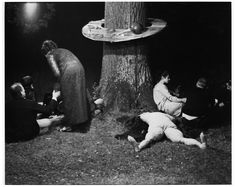
Aus der Serie "Ball in Zalesie", 1968
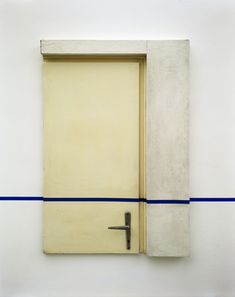
Interwencja 10 (z Drzwiami), 1974
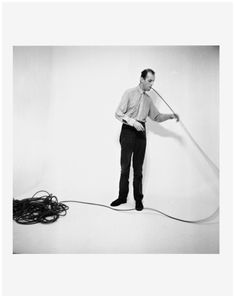
J’AI PERDU LA FIN!!!, 1969

K.., 1969
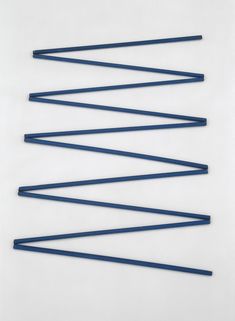
N (Interwencja 4, Zyg-Zag), 1969
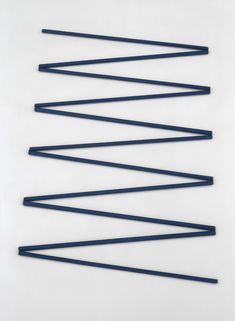
N (Interwencja 4, Zyg-Zag), 1969
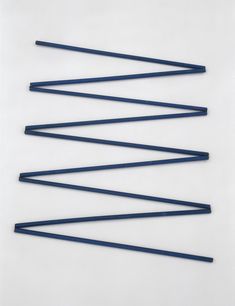
N (Interwencja 4, Zyg-Zag), 1969
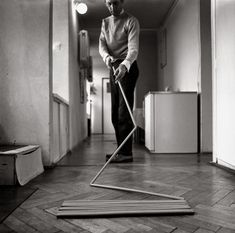
N..., (Interwencja 4, Zyg Zag), approx. 1970
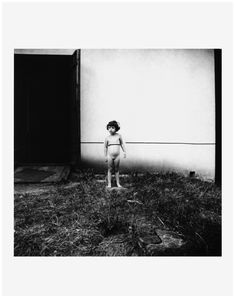
Ohne Titel (Blaues Band, Aktionen in Zalesie Gorne, Poland), 1968